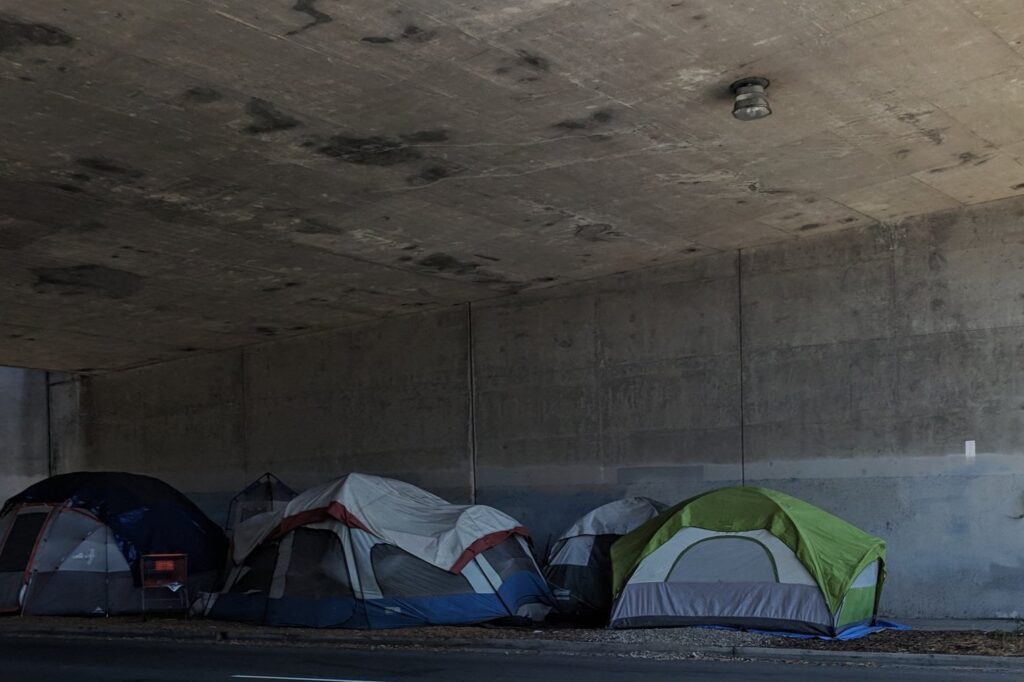
Image by Wikimedia Commons
There were 437 homelessness families tallied across the city, marking an alarming 94% jump since 2022. The data highlights the daunting challenge of tackling the crisis in an expensive city amid a lack of affordable housing, a surge in migrant families and a fentanyl crisis. Maggie Angst at S.F. Chronicle explores.
The overall rise in the city’s homeless population comes two years after San Francisco was one of the few California cities to report a decline. From 2019 to 2022, the city saw a 3.5% overall drop in its homeless population and a 15% drop in unsheltered homelessness — those sleeping on the sidewalks, in tents or in vehicles.
Mayor Breed’s administration touted Thursday that San Francisco has expanded shelter capacity by more than 60% since 2018 and helped more than 15,000 people exit homelessness through various housing assistance programs. But such investments still fell short of addressing the problem.
Ryan Young, a 31-year-old fentanyl user, said he spent the past two years sleeping between a tent pitched on San Francisco’s Division Street near the Interstate 80 freeway overpass and his mom’s home. Young is not ready to move into a shelter or seek treatment for his drug addiction, he said, though he’s “getting to that point.”
Although the city “does try to help a lot,” Young said he and some others living on the streets prefer the freedom.
City officials have said homeless people like Young, who are resistant to services, are some of the most difficult to help. Many are chronically homeless — defined as those with a disability who have been homeless continuously at least one year or for 12 months over the course of three years. The number of chronically homeless in San Francisco increased by 9% over the past two years, according to the city’s data.
The uptick in the chronically homeless and homelessness overall came after a jump in funding from $284 million in the 2018-19 fiscal year to $676 million in 2022-23, according to a recent city audit. Much of that cash infusion is thanks to a November 2018 voter-approved business tax that has produced hundreds of millions of dollars over the past two years for new housing units, rental subsidies and mental health services.
A recent city audit criticized the homelessness department for failing to properly track its spending and hold nonprofit contractors to performance metrics.
The new data released Thursday reflects a point-in-time count where outreach workers set out across the city one night in late January to estimate the number of unhoused people residing in the city. San Francisco’s tally was part of a nationwide effort undertaken every two years to measure homelessness and determine funding priorities at the federal, state and local levels.
Alameda County released its results Wednesday, reporting that the number of unhoused people in Oakland rose 9% over the past two years amid a 3% dip countywide. Both Alameda County and Oakland’s percentage changes were improvements compared with the counts two years ago. More Bay Area counties will release results in the coming week.
In San Francisco, Andrew Hamilton, 36, who’s been homeless for a year, spent months sleeping in a makeshift structure on Minna Street in SoMa, but he recently moved into a silver Toyota Prius that his friend gave him after his structure got dismantled.
“This Frankenstein Prius right here — it’s 10 times better than a tent,” Hamilton said, pointing to the car, parts of which were held together with duct tape and bungee cords. “You can lock the doors, be inside and get some privacy.”
The count found nearly 400 more unhoused people living out of vehicles, like Hamilton, compared with 2022.
This rise in vehicular homelessness was driven, in part, by an increase in family homelessness, in particular new immigrants. The city counted roughly 128 families who were living out of vehicles.
The city pledged in 2017 to eliminate homelessness among families, but the problem has only ballooned.
The mayor on Tuesday announced a $50 million proposal to address the surge in family homelessness through a mix of rent subsidies and vouchers to pay for emergency shelter in hotel rooms. The portion of the homelessness department’s budget dedicated to family homelessness dropped from 12% to 11% from fiscal year 2023-24 to 2024-25, according to an April presentation from the agency.
Read the whole thing here.
Follow Opportunity Now on Twitter @svopportunity

